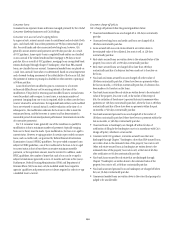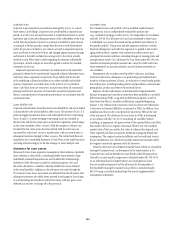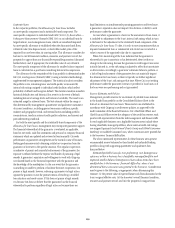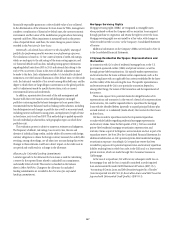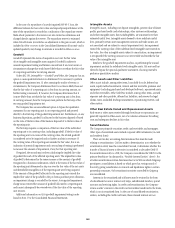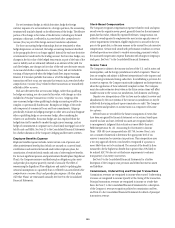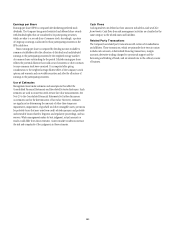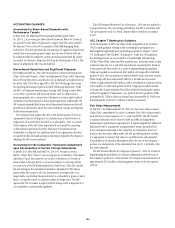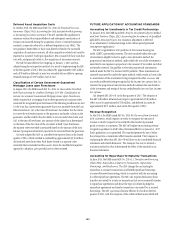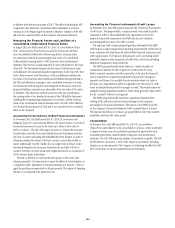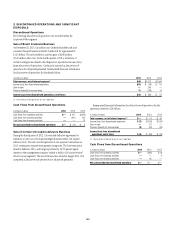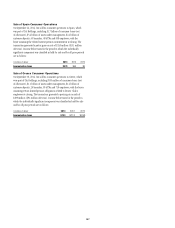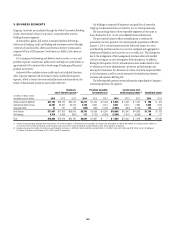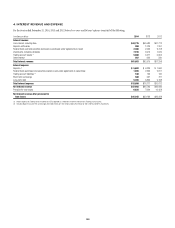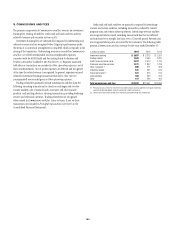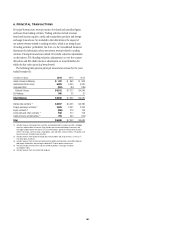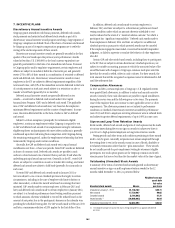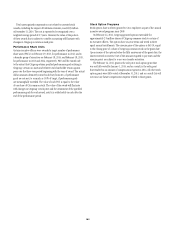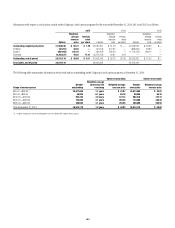Citibank 2014 Annual Report Download - page 171
Download and view the complete annual report
Please find page 171 of the 2014 Citibank annual report below. You can navigate through the pages in the report by either clicking on the pages listed below, or by using the keyword search tool below to find specific information within the annual report.154
be effective from the second quarter of 2015. The effect of adopting the ASU
is required to be reflected as a cumulative effect adjustment to retained
earnings as of the beginning of the period of adoption. Adoption of the ASU
did not have a material effect on the Company’s financial statements.
Measuring the Financial Assets and Liabilities of a
Consolidated Collateralized Financial Entity
In August 2014, the FASB issued ASU No. 2014-13, Consolidation (Topic
810): Measuring the Financial Assets and the Financial Liabilities
of a Consolidated Collateralized Financing Entity, which provides
two alternative methods for measuring the fair value of a consolidated
Collateralized Financing Entity’s (CFE) financial assets and financial
liabilities. This election is made separately for each CFE subject to the scope
of the ASU. The first method requires the fair value of the financial assets
and liabilities to be measured using the requirements of ASC Topic 820, Fair
Value Measurements and Disclosures, with any differences between the
fair value of the financial assets and financial liabilities being attributed to
the CFE and reflected in earnings in the consolidated statement of income.
The alternative method requires measuring both the financial assets and
financial liabilities using the more observable of the fair value of the assets
or liabilities. The alternative method would also take into consideration
the carrying value of any beneficial interests of the CFE held by the parent,
including those representing compensation for services, and the carrying
value of any nonfinancial assets held temporarily. The ASU will be effective
for Citi from the first quarter of 2016 and is not expected to have a material
effect on the Company.
Accounting for Derivatives: Hybrid Financial Instruments
In November 2014, the FASB issued ASU No. 2014-16, Derivatives and
Hedging (Topic 815): Determining Whether the Host Contract in a Hybrid
Financial Instrument Issued in the Form of a Share Is More Akin to
Debt or to Equity. The ASU will require an entity to evaluate the economic
characteristics and risks of an entire hybrid financial instrument issued in
the form of a share (including the embedded derivative feature) in order to
determine whether the nature of the host contract is more akin to debt or
equity. Additionally, the ASU clarifies that no single term or feature would
necessarily determine the economic characteristics and risks of the host
contract; therefore, an entity should use judgment based on an evaluation of
all the relevant terms and features.
This ASU is effective for Citi from the first quarter of 2016 with early
adoption permitted. Citi may choose to report the effects of initial adoption as
a cumulative-effect adjustment to retained earnings as of January 1, 2016 or
apply the guidance retrospectively to all prior periods. The impact of adopting
this ASU is not expected to be material to Citi.
Accounting for Financial Instruments-Credit Losses
In December 2012, the FASB issued a proposed ASU, Financial Instruments-
Credit Losses. This proposed ASU, or exposure draft, was issued for public
comment in order to allow stakeholders the opportunity to review the
proposal and provide comments to the FASB and does not constitute
accounting guidance until a final ASU is issued.
The exposure draft contains proposed guidance developed by the FASB
with the goal of improving financial reporting about expected credit losses on
loans, securities and other financial assets held by financial institutions and
other organizations. The exposure draft proposes a new accounting model
intended to require earlier recognition of credit losses, while also providing
additional transparency about credit risk.
The FASB’s proposed model would utilize an “expected credit loss”
measurement objective for the recognition of credit losses for loans,
held-to-maturity securities and other receivables at the time the financial
asset is originated or acquired and adjusted each period for changes in
expected credit losses. For available-for-sale securities where fair value is
less than cost, impairment would be recognized in the allowance for credit
losses and adjusted each period for changes in credit. This would replace the
multiple existing impairment models in GAAP, which generally require that a
loss be “incurred” before it is recognized.
The FASB’s proposed model represents a significant departure from
existing GAAP, and may result in material changes to the Company’s
accounting for financial instruments. The impact of the FASB’s final ASU
on the Company’s financial statements will be assessed when it is issued.
The exposure draft does not contain a proposed effective date; this would be
included in the final ASU, when issued.
Consolidation
In February 2015, the FASB issued ASU No. 2015-02, Consolidation
(Topic 810): Amendments to the Consolidation Analysis, which is intended
to improve certain areas of consolidation guidance for legal entities such
as limited partnerships, limited liability companies, and securitization
structures. The ASU will reduce the number of consolidation models. The ASU
will be effective on January 1, 2016. Early adoption is permitted, including
adoption in an interim period. The Company is evaluating the effect that ASU
2015-02 will have on its Consolidated Financial Statements.


